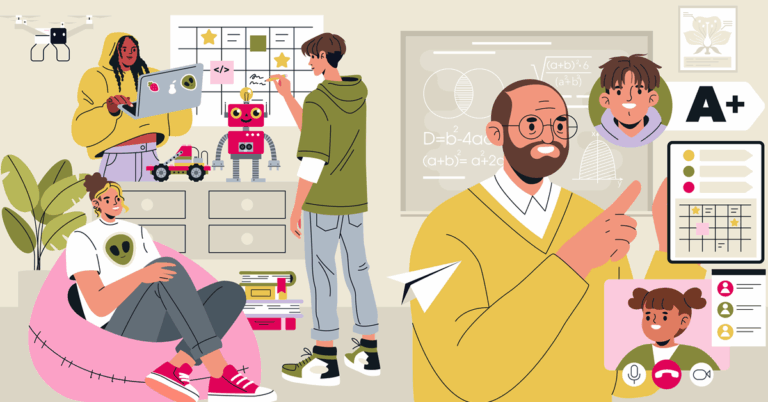Creating a whole child system requires time, resources and dedicated leaders willing to champion the process.
While the Ohio Department of Education has provided a framework for district leaders seeking to implement whole child principles, the planning for how those systems look in practice has largely been left to districts to decide on their own. Through the innovation and collaboration of district leaders, as well as community and student engagement, some key strategies for success have emerged.
A whole child-focused approach to education has the power to transform the lives of students and their families. Through this approach, schools across Ohio are becoming centers of safety and positivity, where students trust that their needs will be honored and cared for, that they will be challenged to be their best selves personally and academically and that they will be supported no matter their background or circumstances.
KnowledgeWorks is committed to building a learning culture where schools, districts, social service agencies, health care providers, community organizations and others work together to ensure that young people in their communities have every opportunity to thrive.
This story is one in a thematic series that highlights the strategic and practical considerations, challenges and success factors that characterize efforts to comprehensively meet the needs of children in and out of the classroom. Centering on the experiences of six districts located in a diverse array of Ohio communities, these stories show what is possible when we care for our students as people while fulfilling the educational mission of our schools.
Bringing community agencies to the table
Whole-child systems are not possible without the help of other experts in the community, particularly health and social service professionals. Multiple Ohio school districts have taken on the role of convener to bring other leaders in the community together to solve their districts’ needs. When school district leaders reached out to local agencies and health providers about collaborating to provide services to students, they often saw immediate and eager buy-in, such as Signature Health and Crossroads Health, who work directly in Wickliffe City School District.
Local health providers and social service agencies are just as invested in reducing barriers to addressing students’ needs as school districts. By acting as conveners, districts create opportunities to blend and braid services with organizations that share their common goal.
Integrating whole child priorities into district strategic plans
Centering whole child principles within their strategic plans and aligning them to long-term goals has been a significant success factor for districts. By weaving whole child approaches throughout their strategic plans, these districts ensured that the physical, mental and social well-being of their students was not only prioritized alongside their academic outcomes, but that their academic outcomes improved as a result.
Approaches districts and counties used while drafting their strategic plans:
Beavercreek City Schools
- Created a specific whole child team of stakeholders
- Based on the final district strategic plan, had schools create their own plan
Wickliffe City School District
- Created a 10-year plan for students: Envisioned where students want to be in 10 years, then mapped down to what supports are needed now to make that vision a reality
- Framed their planning around the idea that their role is to help people
Greene County Educational Service Center
- Invited stakeholders from across the board into the planning process
- Conversations about a whole child approach took place at a county level
Where funding is not available, physical space may bring different opportunities
While lack of funding can be an obvious barrier to districts that are seeking to implement whole child strategies, some districts have found success in providing physical space for local agencies on or near their campuses.
Leadership at Alexander Local Schools in southeast Ohio did not initially have funding to support on-campus services, but they did have the space. In partnership with local agencies, the district piloted a program to provide space on its campus to professional counselors whose services were billed to Medicare or Medicaid, ultimately costing the school district nothing. Having counselors on site better supported student success outcomes, and as a result, the pilot program’s success created opportunities for new funding streams that allowed for more services to be offered.
Empowering staff as advocates and champions
There’s only so much a district leader can do to implement the changes necessary to make whole child education a success. For many districts in Ohio, securing the shared ownership and support of staff that work directly with the students was a crucial strategy for realizing their whole child plans.
Wickliffe City Schools outside of Cleveland took a comprehensive approach to providing staff shared ownership. Through a unified communications plan, staff that interact with students at every level–from teachers to bus drivers–were trained to be ambassadors of the district’s whole child approach. As a result, any member of their staff is empowered to advocate for students, refer students to services when necessary and can speak to families and community members about the value, both personal and academic, of the whole child approach to education in the district.
Get the full story
Ohio’s whole child-focused approach to education has the power to transform the lives of students and their families. Learn how districts in the state:





